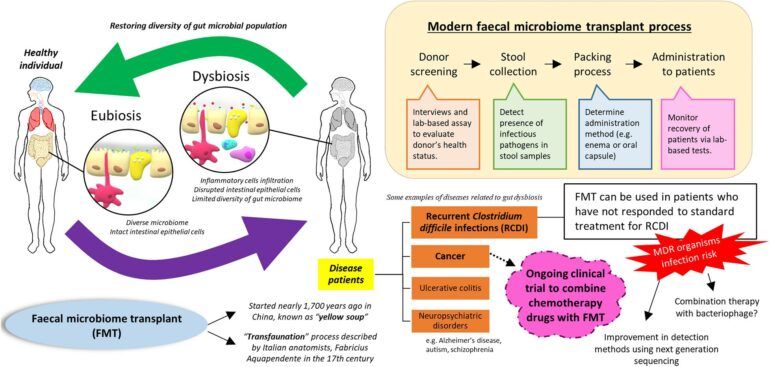Microbiome research to date has been much like the parable of the blind men and the elephant. How much can be said about an elephant by examining just its tail? Researchers have studied what is most readily available – stool rescued from a flush down the toilet – but have been missing the microbial masterminds upstream in the small intestine. Until recently.
Likened by some scientists to another human organ, your microbiome is collectively the tens of trillions of microorganisms that live in interconnected populations on and in your body. They serve as miniature sentinels that help protect your body’s surfaces from pathogenic invaders. In the upper intestine, distinct microbial populations also aid in digestion, metabolism and even immunity.
I am a gastroenterologist who has spent the past 20 years studying the microbiome’s role in health and disease. Advances in technology are helping scientists investigate the small intestine microbiome and the promise it holds for better understanding and treating many diseases.
Big transformations come from small places
Certain members of the small intestine microbiome are linked to obesity and overweight, while other microbial members are linked to a healthy metabolic state. Indeed, small intestine microbes aid in digestion by turning certain simple carbohydrates into the molecular building blocks of a healthy gut and body.
While analogous in function to the colon, small intestine metabolites can be quite distinct from the fiber-derived metabolites of the large intestine microbiome. Some small intestine metabolites help regulate the upper gut’s production of GIP, a sister molecule to the lower gut hormone GLP-1, which makes up the weight loss and type 2 diabetes drugs Wegovy and Ozempic. Together, with another lower gut hormone called PYY, this triumvirate is critical for coordinating your body’s response to food by regulating your appetite and blood sugar.
Monjaro is an incrementally more powerful combination of GIP and GLP-1 compared with Wegovy and Ozempic. The full complement of these hormones is naturally stimulated by the breakdown of products from both the large and small intestine microbiome.
The upshot on gut breakdown
Research has linked a disrupted small intestine microbiome to diseases of the gut. These include irritable bowel syndrome (IBS), small intestinal bacterial overgrowth (SIBO), Crohn’s disease and Celiac disease.
These diseases are thought to arise partly from disturbances in the way the microbiome breaks down food. Celiac disease, for example, is associated with the small intestine microbiome’s decreased ability to digest gluten. IBS and SIBO are linked to the opposite: the small intestine microbiome’s ability to too readily ferment fibers and sugars.
Small intestinal bacterial overgrowth, or SIBO, shares similar symptoms with irritable bowel syndrome.
Foods like wheat, garlic,…



